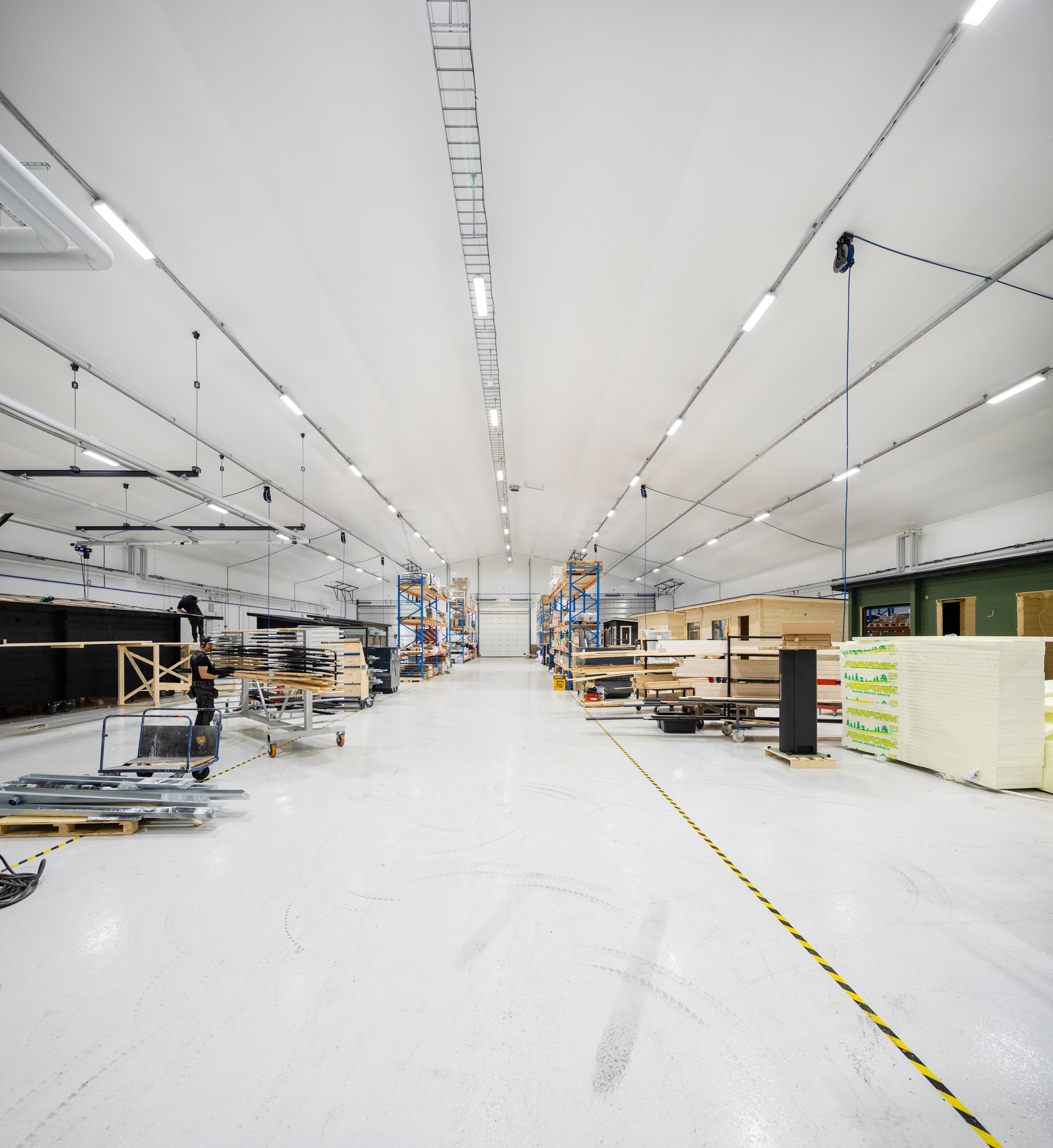Why are Best-Hall buildings often equipped with inner liner? Inner liner has many functions. If the material being stored requires additional protection against condensation, the building should be equipped with interior cladding. It ensures that moisture cannot enter the building. Inner liner can also be installed to protect the frame against corrosive materials. Thirdly, inner liner can slightly reduce heat loss if the building needs to be temporarily kept above freezing in winter.
Some materials cannot withstand a drop of condensation, in which case it is best to equip the building with either a dehumidifier or interior cladding. A dehumidifier is not as energy-efficient as interior cladding, as it runs on electricity. Interior cladding shifts the dew point away from the ceiling, preventing condensation droplets from dripping onto the material being stored. However, if the humidity in the building needs to be adjusted to a specific value, as is often the case when storing timber, a dehumidifier is the only option.
The corrosiveness of either the material being stored or the outdoor air can be a challenge in a steel-framed building. If the material being stored is corrosive, a basic interior cladding can eliminate damage to the frame, as the cladding is dense enough to keep any vapours and dust from the corrosive materials away from the frame. On the other hand, if there is corrosive material in the outdoor air, the frame can be protected by a special solution combining interior cladding and ventilation. By sealing the circulating air away from the space between the cladding layers, the building can be ventilated without the corrosive air reaching the frame.
-1-1.jpg?width=1200&height=800&name=Best-Hall_4188_Belfast_Harbour%20(70)-1-1.jpg)
Yara’s fertiliser warehouse in Belfast was fitted with interior cladding to protect the frame. Special solutions are in place to ensure that no corrosive vapours can enter between the cladding layers.
Insulated buildings always have an interior cladding to protect the insulation from the activities inside the building, and the building also looks smarter with the insulation hidden. A white cladding also gives an illuminated building a great deal more light. Sometimes a building needs to be temporarily heated in the winter, and interior cladding can help keep the heat in better than exterior cladding alone. However, this is only a temporary solution for a short period of heating, as building regulations do not recognise a building insulated with interior cladding alone. Read more about warm and semi-warm buildings below.

The interior cladding is made of a similar fabric as the exterior cladding, but thinner. It does not need to be resistant to wind and other weather conditions, so a thinner and lighter fabric is enough. The interior cladding is usually white, but a coloured (blue or green) fabric is used in applications such as indoor tennis courts to make the ball more visible. One piece of equipment can have many functions, and interior cladding is a prime example.
Are you considering a new warehouse for your materials? Contact us, and we can help you find the right solution for you, with or without interior cladding: https://www.besthall.com/contact